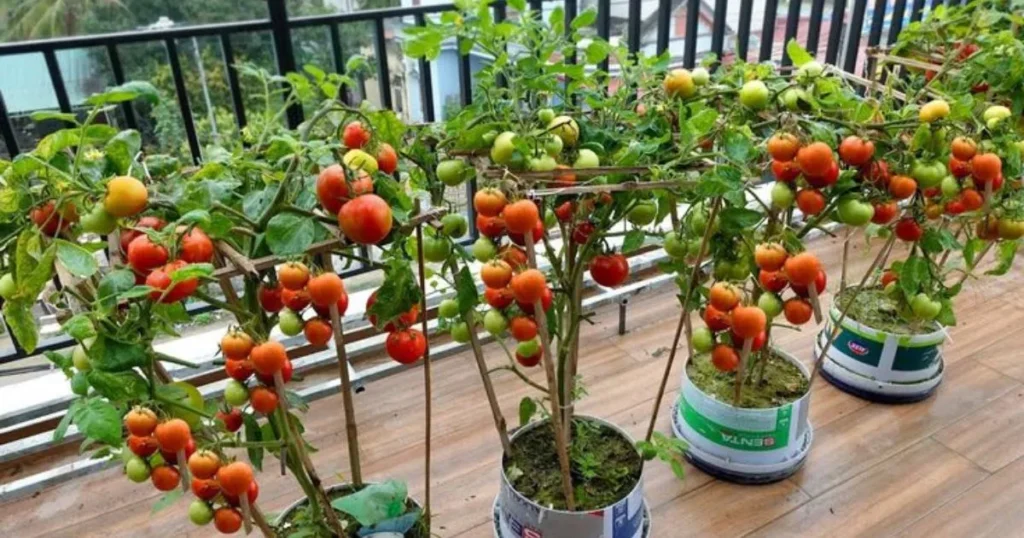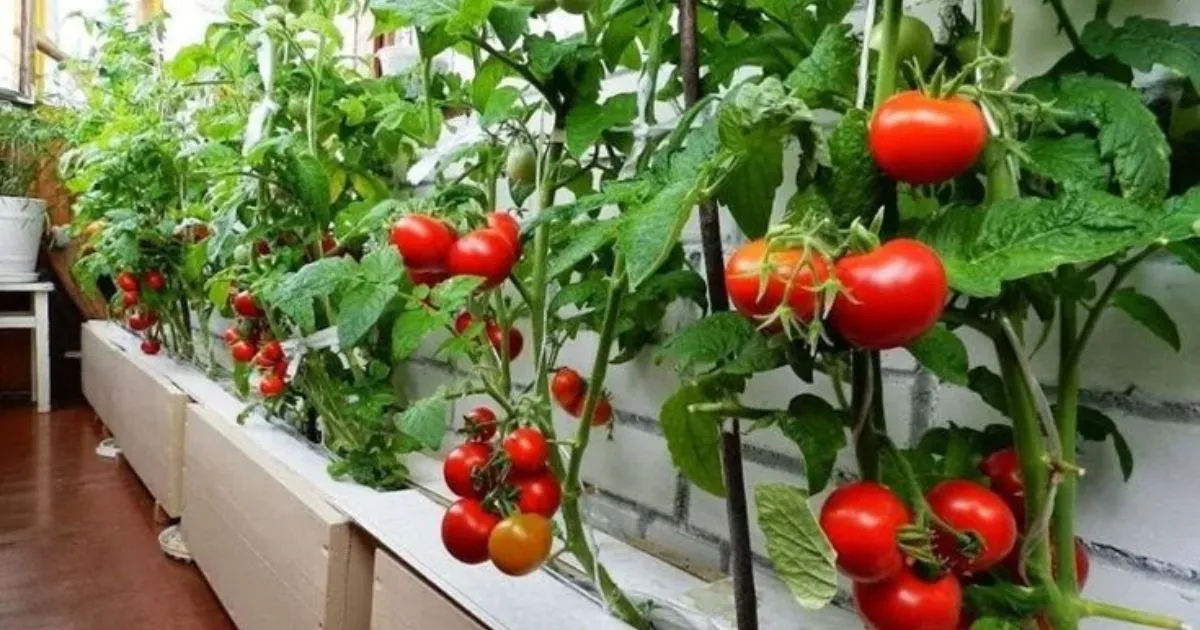Table of Contents
Introduction to Growing Tomatoes Indoors
Tomatoes are one of the most popular vegetables grown in home gardens. However, not everyone has the outdoor space to cultivate these delicious fruits. Fortunately, growing tomatoes indoors has become an increasingly popular option for urban gardeners and those without outdoor space. Growing tomatoes indoors can be a rewarding experience, allowing you to harvest fresh, homegrown tomatoes year-round. In this guide, we will explore how to successfully grow tomatoes indoors, from choosing the right varieties to providing optimal conditions for growth.
Why Grow Tomatoes Indoors?
Before diving into the specifics of how to grow tomatoes indoors, it’s important to understand why growing tomatoes indoors is beneficial. Here are a few reasons why more gardeners are turning to indoor tomato gardening:
- Space Efficiency: Indoor tomato plants are ideal for those with limited space. You can grow them in small areas like windowsills, countertops, or dedicated indoor gardens.
- Year-Round Growing: Indoor tomato gardening allows for year-round harvesting, as you can control the climate and extend the growing season beyond the typical outdoor growing months.
- Pest Control: Growing tomatoes indoors can minimize the risks of pests and diseases that often affect outdoor plants, making your gardening experience more manageable.
Types of Tomatoes Suitable for Indoor Growing
When growing tomatoes indoors, selecting the right tomato variety is crucial. Some varieties are more suited to indoor conditions than others. Typically, dwarf and compact tomato varieties are the best options for indoor spaces, as they require less room and can thrive in smaller containers.
1. Tiny Tim: A dwarf cherry tomato variety, Tiny Tim is perfect for small indoor spaces. It grows to about 12-18 inches tall and produces small, sweet tomatoes.
2. Balcony: This compact variety is ideal for container growing and can reach heights of about 18-24 inches. It produces small fruits and is well-suited for indoor environments.
3. Tumbling Tom: A cherry tomato that is perfect for hanging baskets or containers. It produces sweet, small tomatoes and is known for its ability to thrive in confined spaces.
4. Bush Goliath: A small determinate variety, Bush Goliath grows to about 18-24 inches tall and produces medium-sized tomatoes. It’s an excellent choice for indoor gardeners looking for a reliable, compact variety.
How to Grow Tomatoes Indoors: Step-by-Step Guide
Growing tomatoes indoors requires attention to detail, as these plants need specific conditions to thrive. From selecting containers to ensuring proper lighting and watering, here’s how to grow tomatoes indoors successfully.

1. Choose the Right Container for Growing Tomatoes Indoors
One of the first steps when growing tomatoes indoors is selecting an appropriate container. Tomatoes need enough space for their roots to grow, so it’s essential to choose a pot with good drainage. A container that is 5 to 7 gallons in size is ideal for most indoor tomato varieties.
- Drainage: Ensure the pot has drainage holes to prevent water from accumulating at the bottom, which could lead to root rot.
- Material: Terracotta pots are a popular choice because they are breathable and help regulate moisture. However, plastic pots can also work well as long as they provide proper drainage.
2. Selecting the Right Soil for Growing Tomatoes Indoors
Soil is a critical component for growing tomatoes indoors. Tomatoes prefer slightly acidic, well-draining soil that is rich in organic matter. Consider using a high-quality potting mix specifically designed for container gardening.
- Soil Mix: A good mix will be light, well-draining, and fertile. You can make your own mix by combining equal parts of potting soil, compost, and perlite or sand.
- pH Level: Tomatoes thrive in soil with a pH of 6.0 to 6.8. You can test your soil’s pH with a simple testing kit available at garden centers.
3. Providing Proper Light for Growing Tomatoes Indoors
Tomatoes need a lot of sunlight to grow well. When growing tomatoes indoors, it’s important to place them in a location that gets at least 6-8 hours of direct sunlight each day. A south-facing window is ideal for indoor tomato plants.
- Artificial Lighting: If natural sunlight is insufficient, supplement the light with grow lights. LED or fluorescent grow lights are effective at providing the necessary spectrum for tomatoes.
- Light Duration: Indoor tomatoes need around 12-16 hours of light each day. Using a timer for your grow lights can ensure consistent light exposure.
4. Temperature and Humidity for Growing Tomatoes Indoors
Tomatoes are sensitive to temperature fluctuations. To ensure optimal growth, maintain a consistent indoor temperature of 70-80°F (21-27°C) during the day and 55-70°F (13-21°C) at night.
- Humidity: Tomatoes also prefer moderate humidity levels between 60-70%. To maintain the right humidity, you can mist the plants occasionally or use a humidifier. However, avoid excessive moisture around the plants, as this can encourage diseases like powdery mildew.
5. Watering and Feeding Indoor Tomatoes
Proper watering and feeding are essential for healthy indoor tomato plants. Tomatoes are quite thirsty, but they don’t like to sit in soggy soil. Ensure that the soil remains consistently moist but not waterlogged.
- Watering: Water the plants thoroughly when the top inch of soil feels dry. Avoid overwatering, as this can cause root rot. Ensure that excess water drains out of the pot.
- Feeding: Indoor tomatoes benefit from regular feeding with a balanced, water-soluble fertilizer. Apply a tomato-specific fertilizer once every 2 weeks to provide essential nutrients like nitrogen, phosphorus, and potassium.
6. Pollination for Indoor Tomato Plants
Indoors, the lack of natural pollinators such as bees means that you’ll need to help with pollination. Tomatoes are self-pollinating, meaning they have both male and female parts on the same flower. However, they still require some assistance in transferring pollen.
- Hand Pollination: Gently shake the plant or use a soft paintbrush to transfer pollen between flowers. Doing this a few times a week will encourage fruit production.
- Air Circulation: Ensuring good air circulation around the plant helps with pollination. Consider using a small fan to gently blow air over the plant.
Common Problems When Growing Tomatoes Indoors
While growing tomatoes indoors is a great option, there are some common problems you might encounter. Being aware of these issues can help you troubleshoot and maintain healthy plants.

1. Pests and Diseases
Even though you’re growing indoors, pests such as aphids, spider mites, and whiteflies can still invade your tomato plants. Additionally, diseases like blight and mildew can affect indoor tomatoes.
- Prevention: Regularly inspect your plants for signs of pests or diseases. Neem oil or insecticidal soap can help manage infestations.
- Cleanliness: Keep the growing area clean and free from fallen leaves or debris, which can harbor pests.
2. Leaf Curling and Yellowing
Leaf curling or yellowing may indicate issues such as nutrient deficiencies, overwatering, or pest infestations.
- Fixing Nutrient Deficiencies: If you suspect a nutrient deficiency, adjust your fertilizing schedule and ensure that the soil is rich in essential nutrients.
- Watering Issues: Make sure the plant’s soil is well-draining and not too soggy.
Harvesting Tomatoes Grown Indoors
After months of care, it’s time to harvest your indoor tomatoes. Depending on the variety, tomatoes typically take between 50 to 85 days to reach maturity. To determine if the fruit is ripe, check for color and firmness.
- Harvesting: Gently twist or cut the ripe tomatoes off the vine. Be careful not to damage the plant while harvesting.
- Storing: Freshly harvested indoor tomatoes can be stored at room temperature for several days. If you have a large harvest, consider freezing or canning your tomatoes for later use.
Conclusion: Growing Tomatoes Indoors
Growing tomatoes indoors can be a fulfilling and rewarding experience. With the right variety, container, and care, you can enjoy fresh, homegrown tomatoes throughout the year. The key to success is providing proper lighting, watering, temperature, and air circulation. By following the steps outlined in this guide, you’ll be well on your way to growing healthy, thriving indoor tomato plants.
Frequently Asked Questions (FAQ)
1. What is the best type of tomato to grow indoors?
Dwarf or compact tomato varieties like Tiny Tim, Tumbling Tom, and Balcony are the best choices for growing tomatoes indoors.
2. How much sunlight do indoor tomatoes need?
Indoor tomatoes need at least 6-8 hours of direct sunlight daily. If natural light is insufficient, supplement with artificial grow lights.
3. How often should I water my indoor tomato plants?
Water your indoor tomato plants when the top inch of soil feels dry. Make sure the soil is consistently moist but not soggy.
4. Can I grow tomatoes indoors without a grow light?
While it is possible to grow tomatoes indoors with natural sunlight, using a grow light ensures the plants receive the necessary spectrum of light for healthy growth.
5. How can I help with pollination indoors?
Indoor tomatoes are self-pollinating, but you may need to help by gently shaking the plant or using a paintbrush to transfer pollen between flowers.

